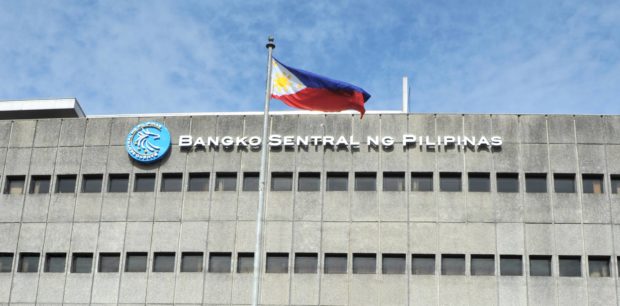MANILA, Philippines—The Philippines’ dollar reserve reversed a two-month decline in July as the national government stashed more foreign currency in the central bank after borrowing more, according to the regulator.
In a statement, the Bangko Sentral ng Pilipinas (BSP) said the country’s gross international reserve level, based on preliminary data, rose by $790 million to $106.55 billion as of end-July 2021 from the end-June 2021 level of $105.76 billion.
“The month-on-month increase in the gross international reserve level reflected mainly the inflows from the national government’s net foreign currency deposits with the BSP,” said the BSP statement.
These, the agency said, “includes proceeds from its issuance of Republic of the Philippines global bonds, and upward adjustment in the value of the BSP’s gold holdings due to the increase in the price of gold in the international market.”
These were partly offset, however, by outflows from the national government’s payments of foreign currency debt and the BSP’s foreign exchange operations.
The BSP said the latest dollar reserve level represents a more than adequate external liquidity buffer equivalent to 12.1 months’ worth of imports of goods and payments of services and primary income.
It is also worth 7.7 times the country’s short-term external debt based on original maturity and 5.1 times based on residual maturity.
By convention, a country’s dollar reserves are viewed to be adequate if they can finance at least three months’ worth of imports of goods and payments of services and primary income.
Similarly, the net international reserves — which refers to the difference between the BSP’s gross reserves and total short-term liabilities — increased by $790 million to $106.55 billion as of end-July 2021 from the end-June 2021 level of $105.76 billion.
Short-term debt based on residual maturity refers to outstanding external debt with original maturity of one year or less, plus principal payments on medium- and long-term loans of the public and private sectors falling due within the next 12 months.
The level of dollar reserves, as of a particular period, is also considered adequate if it provides at least 100 percent cover for the payment of the country’s foreign liabilities, public and private, falling due within the immediate twelve-month period.
Earlier this week, the BSP’s policy-making Monetary Board approved a relaxation of the rules governing the purchase of US dollars by Filipinos. Apart from facilitating international trade, regulators hope the new rules will also help perk up demand for dollars amid a high level of reserves which will, in turn, help keep the peso from appreciating too much.
TSB
